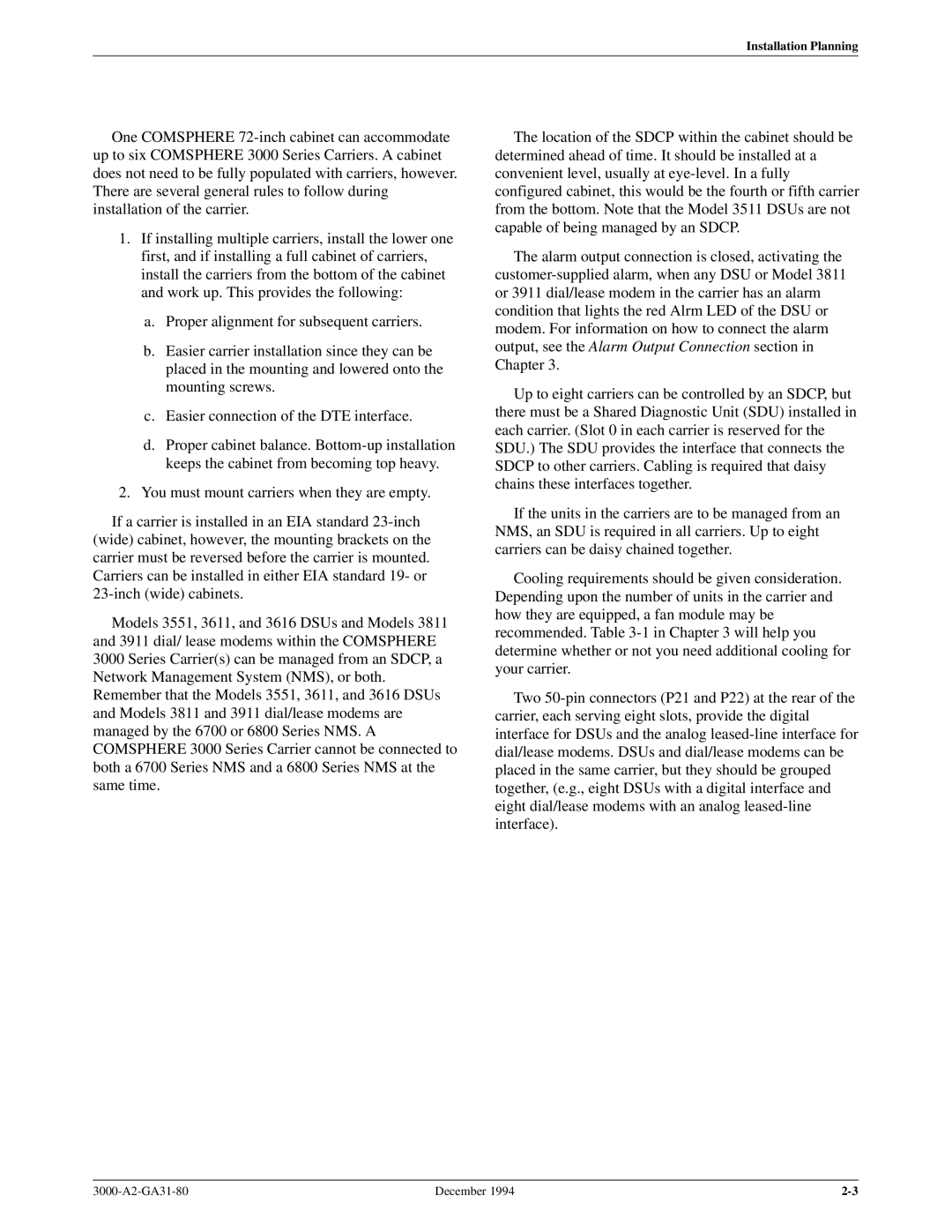
Installation Planning
One COMSPHERE
1.If installing multiple carriers, install the lower one first, and if installing a full cabinet of carriers, install the carriers from the bottom of the cabinet and work up. This provides the following:
a.Proper alignment for subsequent carriers.
b.Easier carrier installation since they can be placed in the mounting and lowered onto the mounting screws.
c.Easier connection of the DTE interface.
d.Proper cabinet balance.
2.You must mount carriers when they are empty.
If a carrier is installed in an EIA standard
Models 3551, 3611, and 3616 DSUs and Models 3811 and 3911 dial/ lease modems within the COMSPHERE 3000 Series Carrier(s) can be managed from an SDCP, a Network Management System (NMS), or both. Remember that the Models 3551, 3611, and 3616 DSUs and Models 3811 and 3911 dial/lease modems are managed by the 6700 or 6800 Series NMS. A COMSPHERE 3000 Series Carrier cannot be connected to both a 6700 Series NMS and a 6800 Series NMS at the same time.
The location of the SDCP within the cabinet should be determined ahead of time. It should be installed at a convenient level, usually at
The alarm output connection is closed, activating the
Up to eight carriers can be controlled by an SDCP, but there must be a Shared Diagnostic Unit (SDU) installed in each carrier. (Slot 0 in each carrier is reserved for the SDU.) The SDU provides the interface that connects the SDCP to other carriers. Cabling is required that daisy chains these interfaces together.
If the units in the carriers are to be managed from an NMS, an SDU is required in all carriers. Up to eight carriers can be daisy chained together.
Cooling requirements should be given consideration. Depending upon the number of units in the carrier and how they are equipped, a fan module may be recommended. Table
Two
December 1994 |
